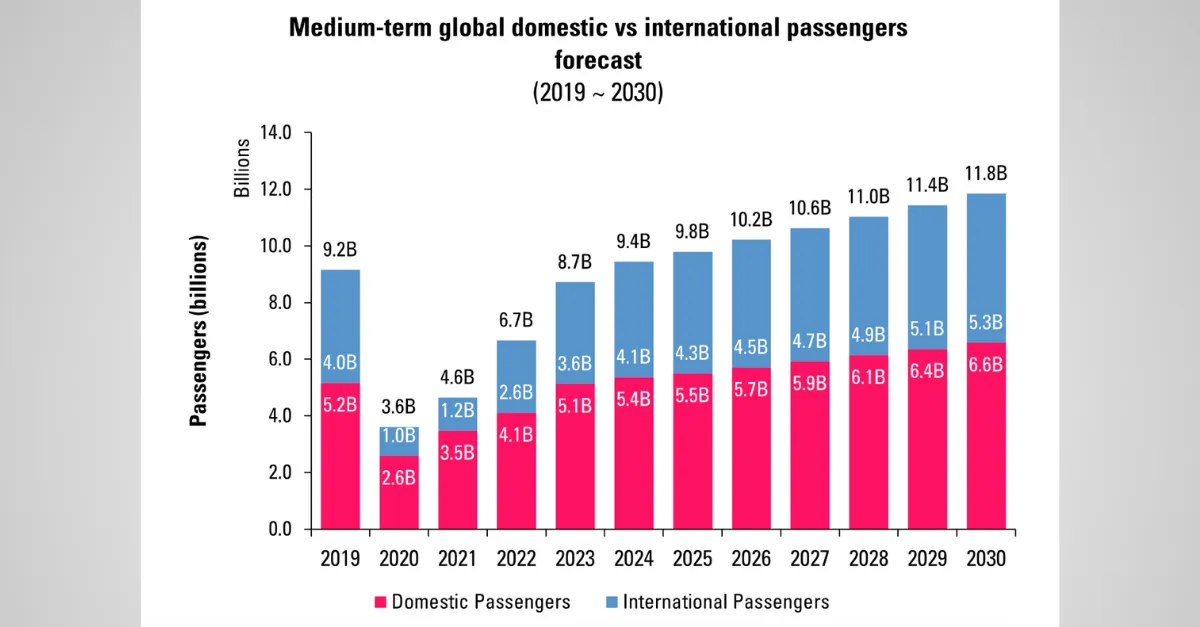You are viewing 2 of your 2 free articles
Middle East air passengers to grow 5.9% in 2025
Regional travel demand to outpace global average with 466 million flyers this year
Global air travel is set to reach 9.8 billion passengers in 2025, with the Middle East emerging as one of the fastest-growing regions, projected to rise by 5.9%.
According to the latest World Airport Traffic Report from Airports Council International (ACI), the Middle East will serve 466 million passengers in 2025, driven by continued investment in airport infrastructure, fleet expansion from regional carriers and robust tourism flows.
Airlines from the GCC are reporting strong profits and steady expansion. The UAE’s Etihad Airways plans to double both its fleet size and passenger numbers by 2030, while Dubai-based Emirates has become the world’s most profitable carrier in 2025.
ACI’s report identifies the Middle East as the second-fastest-growing region globally, behind Africa, which is expected to see a 9.4% jump, though total volumes there are lower at a projected 273 million passengers.
Asia Pacific remains the largest air travel market, expected to reach 3.6 billion passengers (up 5.6%), with Southern and Southeast Asia delivering much of the growth.
RELATED:
10 New direct flights from the Middle East launching this October
Emirates to add 6 weekly Dubai-London Heathrow flights
British Airways boosts Middle East connectivity with extra flights
In Europe, the world’s second-largest aviation market, passenger numbers are forecast to climb to 2.5 billion, with muted growth of 3.6% as more domestic travellers shift to rail.
The picture in North America is mixed, with the US domestic market falling by 2.0% in the first half of 2025, while international travel increased by 1.0%.
In 2024, ACI data showed US domestic and international traffic rose by 3.8% and 8.7%, respectively.
Globally, international passenger traffic is projected to increase by 5.3% in 2025, while domestic growth lags at 2.4%.
ACI also confirmed total passenger traffic in 2024 was 9.4 billion, an 8.3% year-on-year rise, surpassing pre-pandemic volumes of 9.2 billion recorded in 2019.
Looking ahead, global passenger numbers are expected to exceed 10 billion in 2026 and reach 11.8 billion by 2030, a 2 billion increase over the 2025 figure.
“International travel remains the main engine of growth, but regional variations reflect a mix of structural strengths, policy challenges, and evolving travel patterns,” said ACI World Director General Justin Erbacci.
“To sustain air travel demand globally, regulators must foster policies and frameworks that support improved connectivity, long-term resilience, and sustainable growth.”
The annual ACI report compiles data from more than 2,800 airports across 185 countries and territories.
For more information, visit aci.aero


















